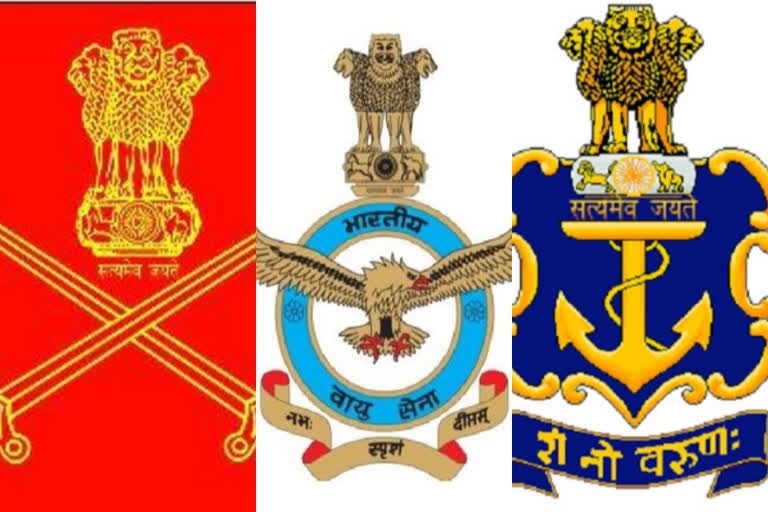New Delhi: Three three-star officers—an Indian Army lieutenant-general, a Navy vice-admiral and an IAF air marshal—are expected to submit the respective ‘executable’ plans of the three armed wings on creation of Theatre commands by September, an official source has told ETV Bharat.
“Although the tension with China near the Line of Actual Control (LAC) has affected the progress of the movement towards Theatre commands, the respective ‘executable’ plans of the three forces are likely to be submitted in September,” the official said.
Under the watch of the newly-created post of the Chief of Defence Services (CDS), the Indian military is undertaking one of the biggest modernization and reforms effort in its history by doing away with functional commands system and replacing it with Theatre command architecture.
Basically, the new structure will do away with the system of the army, navy and the IAF operating separately under their own respective commands and replace it with one where all the various arms of the military participate in a single cohesive format during wars and conflicts.
A single commander in a designated zone will command all the assets and resources of all forces be it from the army, the navy or the air force stationed in that zone.
Since 2015, China has reorganized its military along Theatre command lines by restructuring its seven military regions into five geographical-operational theatre commands. On the other hand, the United State’s six unified Theatre commands control the global operations.
In contrast, India has 17 commands based on operational and geographical requirements—six operational army commands and one training command, three navy commands, five IAF operational commands besides a Training Command and a Maintenance Command. This excludes the tri-services command located at the Andaman and Nicobar Islands and the SFC (Strategic Forces Command).
In a case of a conflict with China, while the Indian Army will have its Northern, Central and Eastern commands engaging China, the IAF will have its Western, Central and Eastern air commands. For China, only the joint Western Theatre command—with strike forces, ground forces, artillery, air assets, etc—will engage the six Indian army and IAF commands.
Approved just last year, the Indian move towards establishment of Theater Commands is because of the realization of the fact, albeit late, that ‘jointness’ and ‘integration’ is most vital in today’s world of hybrid warfare or wars where the lines blur between war, politics, diplomacy, legalities, and even between the combatant and civilians.
The Indian military's ‘Joint Doctrine of the Armed Forces – 2017’ also says that the character of future wars is likely to be “ambiguous, uncertain, short, swift, lethal, intense, precise, non-linear, unstructured, unpredictable, and hybrid”.
Also Read:World's first floating Apple retail store to open at Marina Bay Sands in Singapore
